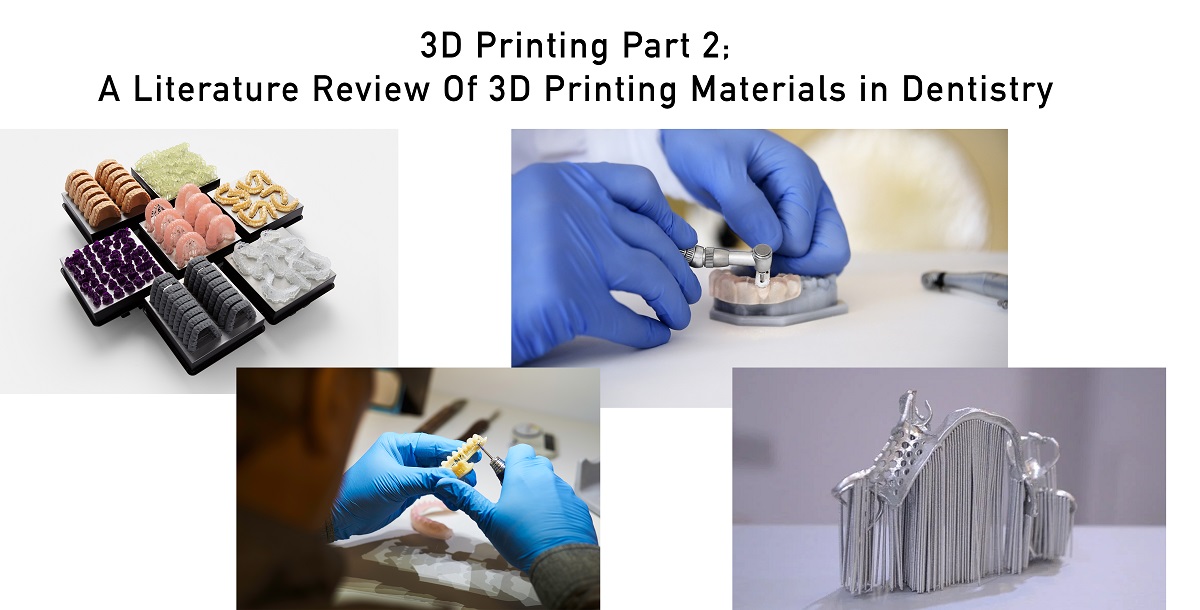Introduction: The current generation of 3D printers are lighter, cheaper, and smaller, making them more accessible to the chairside digital dentist than ever before. 3D printers in general in the industrial and chairside setting can work with various types of materials including, metals, ceramics, and polymers. Evidence presented in many studies show that an ideal material used for dental restorations is characterised by several properties related to durability, cost-effectiveness, and high performance. This review is the second part in a 3D Printing series that looks at the literature on material science and applications for these materials in 3D printing as well as a discussion on the potential further development and future evolution in 3D printing materials. Conclusions: Current materials in 3D printing provide a wide range of possibilities for providing more predictable workflows as well as improving efficiency through less wasteful additive manufacturing in CAD/CAM procedures. Incorporating a 3D printer and a digital workflow into a dental practice is challenging but the wide range of manufacturing options and materials available mean that the dentist should be well prepared to treat patients with a more predictable and cost effective treatment pathway. As 3D printing continues to become a commonplace addition to chair side dental clinics, the evolution of these materials, in particular reinforced PMMA, resin incorporating zirconia and glass reinforced polymers offer increased speed and improved aesthetics that will likely replace subtractive manufacturing milling machines for most procedures.

